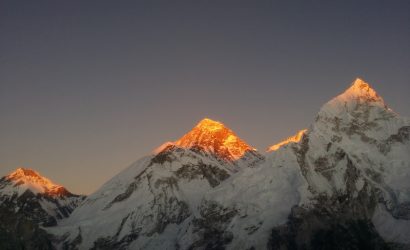Tsum Valley Trek is a recently opened trekking route located in the remote Himalayan region of Nepal. It offers stunning views of the surrounding mountains, pristine natural beauty, and insight into the unique culture and traditions of the local people. The trek takes you through picturesque villages, lush forests, and serene valleys, making it a truly unforgettable experience for any trekking enthusiast. With its peaceful atmosphere and off-the-beaten-path feel, Tsum Valley Trek is a hidden gem waiting to be explored by adventurous travelers.
Tsum Valley Trek is a popular and relatively new trekking destination located in the northern part of Gorkha district in Nepal. The valley is named after the Tsumba people who live in the region and has a long and rich history.
The Tsum Valley has been isolated from the rest of the world for centuries, which has helped preserve its unique culture and traditions. The valley is home to several ancient monasteries, chortens, and mani walls, which date back to the 8th century. These religious sites hold great significance for the local Buddhist population, and many pilgrims visit them throughout the year.
The history of the Tsum Valley is closely intertwined with the history of Buddhism in the region. It is believed that the great Tibetan saint Milarepa visited the valley during his travels and meditated in the caves that can still be seen today. The valley has also been an important trading route between Tibet and Nepal, and evidence of this can be seen in the traditional architecture of the villages and the goods traded in the local markets.
In recent years, the Tsum Valley has gained popularity as a trekking destination due to its stunning natural beauty, rich cultural heritage, and warm hospitality of the locals. The trek offers a chance to explore the remote and pristine landscapes of the Himalayas while immersing oneself in the traditional way of life of the Tsumba people.
Overall, the Tsum Valley Trek offers a unique opportunity to experience the history, culture, and natural beauty of this hidden gem in the Himalayas. It is a journey back in time to a place where ancient traditions are still alive and thriving, making it a truly unforgettable adventure for trekkers from around the world.
-
Kathmandu
-
Tea house trek,
-
Ganesh Himal Base Camp 4500m,
-
by private 4W vehicle,
-
Culture,Hiking, qnd trekking
-
Three meals a day (Breakfast, Lunch, and Dinner) during the trek.
-
English, French, Chinese,
-
2/4
-
15
-
64
Overview
The local people are mostly of Tibetan origin and speak a unique dialect. Even these days, some families practice polyandry (or having more than one husband at a time). These families have been found to be well managed and wealthier than other families. A long history of Buddhism can be seen. The Buddhist saint named Milarepa is believed to have meditated in a cave in these mountains. It is believed that there is a favorable ambience for fortunate events in this region. The people in Tsum have a strong faith in Buddhism. They pray to Buddha, Guru Rinpoche (Padmasambhava) and some bodhisattvas. They install Prayer Flags, Khata, or Mani walls, burn butter lamps in monasteries and believe in the reincarnation of Lamas. The histories and way of life of supernatural entities and stories about them are well-known. Nevertheless Prayer Flags, Khata, or Mani walls are installed and ritual burning of juniper is performed to purify an area against such supernatural entities. The people of Tsum perform numerous rituals and festivals against devil entities. However, the slaughtering of animals on an altar to honor deities does not occur. A few laymen and Lamas practice some special rites to exorcise evil factors. Local people practice mainly two types of astrology “Black” and “White” for the determination of auspicious days.
Trip Highlights
- the fantastic hidden land where Guru Rinpoche and Milarepa visited for meditation in several caves,
- the fantastic hidden land where Guru Rinpoche and Milarepa visited for meditation in several caves,
- the inhabitants of the Buri Gandaki valley known as Tsumbas are of Tibetan descent and their speech, dress,






